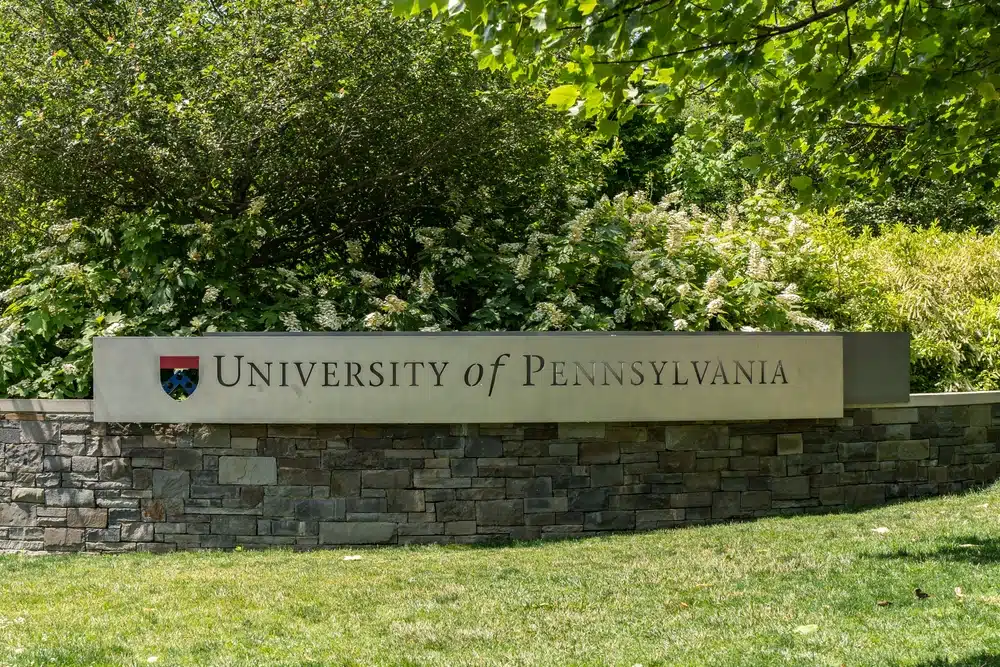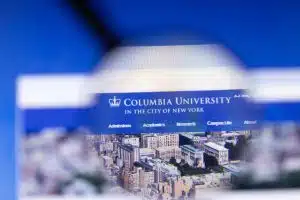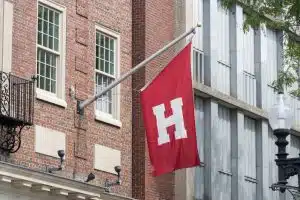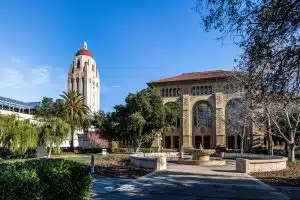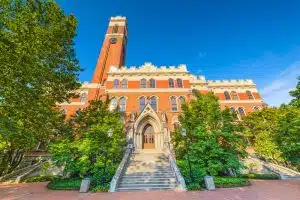UPenn Freshman Class Size
Curious about the UPenn freshman class size? This metric is more than just a number—it’s a window into the heart of a top-tier institution. Read on to uncover the intriguing trends and factors shaping this crucial statistic. Don’t miss out on this captivating insight!
The Historical Trends of UPenn Freshman Class Sizes
The Early Years of UPenn: A Look at Class Sizes
In the early years of UPenn, class sizes were drastically smaller compared to modern times. The university, founded in 1740, initially had a limited number of students, as was typical for higher education institutions at the time.
During this period, UPenn’s freshman class sizes were often comprised of a small group of privileged individuals who had access to education. These students were typically from wealthy families or were part of the elite social circles of the time. The small class sizes allowed for more personalized instruction and close relationships between students and faculty.
As the university grew in prominence and reputation, it attracted a wider range of students, including those from different socioeconomic backgrounds. This gradual shift in student demographics led to a slow increase in freshman class sizes by the end of the 18th century.
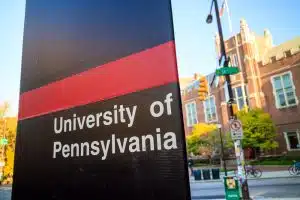
By the turn of the 19th century, UPenn had established itself as a leading institution of higher education, and its freshman class sizes continued to expand. The university’s commitment to academic excellence and its dedication to providing a well-rounded education attracted more students seeking intellectual growth and professional opportunities.
Class Sizes in the 20th Century
The 20th century marked a time of significant growth for UPenn’s freshman class sizes. With advancements in secondary education and the expansion of university endowments, more students were able to afford and seek higher education.
During this period, UPenn experienced a surge in applications from students across the United States and around the world. The university’s commitment to diversity and inclusivity played a crucial role in attracting students from different cultural, ethnic, and socioeconomic backgrounds. This influx of students enriched the academic environment and fostered a vibrant and diverse campus community.
The introduction of government-backed student loans and scholarship programs further enhanced the accessibility of UPenn, allowing students from underprivileged backgrounds to pursue their educational aspirations. These initiatives not only increased the freshman class sizes but also contributed to the university’s mission of providing equal educational opportunities for all.
Recent Trends in UPenn Freshman Class Sizes
In recent years, UPenn’s freshman class size has seen even further growth. For instance, the Class of 2027 has 2,420 students. This growth is attributed to the university’s prestige and strong global reputation, making it a top choice for many high school graduates around the world.
UPenn’s commitment to innovation and cutting-edge research has also attracted students interested in pursuing careers in fields such as technology, business, and healthcare. The university’s renowned faculty and state-of-the-art facilities have positioned UPenn as a leader in these areas, further fueling the increase in freshman class sizes.
Additionally, the accessibility and popularity of online applications have facilitated this growth. Prospective students can now easily apply to UPenn from the comfort of their own homes, eliminating geographical barriers and expanding the pool of applicants.
Although the recent COVID-19 pandemic has affected admissions processes globally, UPenn’s freshman class sizes have remained resilient, proving the enduring appeal of this prestigious institution. The university has adapted to the challenges posed by the pandemic by implementing virtual tours, online information sessions, and innovative recruitment strategies to ensure that prospective students have the opportunity to experience UPenn’s unique academic and campus life.
As UPenn continues to evolve and adapt to the changing landscape of higher education, it is expected that the freshman class sizes will continue to grow, attracting talented students from diverse backgrounds who are eager to contribute to the university’s legacy of excellence.
Factors Influencing UPenn Freshman Class Sizes
The size of UPenn’s freshman class is influenced by various factors, including admissions policies, financial aid, and housing availability. These factors play a crucial role in shaping the composition and diversity of the incoming class each year.

Admissions Policies and Their Impact
UPenn’s admission policies are designed to create a diverse and talented student body. The university follows a holistic admission process, considering not only academic performance but also extracurricular activities and personal background. This comprehensive evaluation ensures that students with different strengths and passions are admitted, contributing to the vibrant and intellectually stimulating environment at UPenn.
Furthermore, UPenn practices need-blind admissions, which means that students are evaluated without taking into account their ability to pay tuition. This policy promotes accessibility and inclusivity, allowing students from all financial backgrounds to have equal opportunities to attend UPenn. By removing financial barriers, the university has been able to attract a larger pool of applicants, resulting in increased class sizes.
The Role of Financial Aid in Class Sizes
Financial aid is a significant factor in determining the size of UPenn’s freshman class. The university is committed to providing generous financial aid packages to ensure that students from diverse socioeconomic backgrounds can afford to attend. These aid programs not only increase the total number of students who can enroll at UPenn but also attract a more diverse range of candidates.
By offering financial support, UPenn has been successful in creating a socioeconomically diverse student body. Students from different economic backgrounds bring unique perspectives and experiences to campus, enriching the learning environment for everyone. The availability of financial aid has played a pivotal role in increasing class sizes and fostering a more inclusive community at UPenn.
How Housing Availability Affects Class Sizes
Housing availability is another crucial factor that influences the size of UPenn’s freshman class. On-campus housing is an integral part of the university experience, providing students with a supportive community and convenient access to campus resources.
UPenn recognizes the importance of housing and has made consistent investments in enhancing and expanding its facilities. By increasing the availability and capacity of on-campus housing, the university has been able to accommodate a larger number of students in recent years. This has allowed UPenn to admit more students without compromising on-campus living standards.
The availability of housing options also plays a role in attracting students to UPenn. Prospective students are more likely to choose a university that can guarantee them a place to live on campus, ensuring a smooth transition into college life. By prioritizing housing expansion, UPenn has been able to meet the growing demand and accommodate a larger freshman class.
In conclusion, the size of UPenn’s freshman class is influenced by a combination of factors, including admissions policies, financial aid, and housing availability. These factors work together to shape the composition and diversity of the incoming class, ensuring that UPenn continues to provide a vibrant and inclusive educational experience for its students.
The Implications of UPenn’s Freshman Class Size
Class Size and Its Impact on Student Experience
The size of the freshman class at UPenn undoubtedly impacts the student experience. A larger class offers a diverse range of perspectives and opportunities for interaction, enriching the academic environment. Students from various backgrounds and cultures come together, fostering a vibrant community where ideas are exchanged, friendships are formed, and lifelong connections are made.
Moreover, a larger class size provides students with a broader network of peers, expanding their social and professional circles. This network can be invaluable in terms of career opportunities, mentorship, and collaborative projects. Students have the chance to engage with individuals who possess different interests, skills, and experiences, creating a stimulating environment that encourages personal growth and intellectual exploration.

However, it is important to acknowledge that a larger class size can also present challenges. With more students vying for limited resources, such as research opportunities, internships, and campus facilities, competition can become more intense. Students may need to be proactive and strategic in pursuing these opportunities, ensuring they stand out among their peers.
How Class Size Affects Faculty and Teaching
Class sizes also have a significant effect on faculty and the quality of teaching. Maintaining a reasonable student-faculty ratio is crucial for ensuring individual attention and high-quality instruction. Despite its large classes, UPenn has an excellent student-to-faculty ratio, ensuring that students receive the attention and support they need.
With a smaller class size, faculty members can dedicate more time to each student, providing personalized guidance, feedback, and mentorship. This individualized approach enhances the learning experience and fosters strong relationships between students and faculty. Students have the opportunity to engage in meaningful discussions, receive tailored academic advice, and benefit from the expertise and knowledge of their professors.
Furthermore, a smaller class size allows for more interactive and participatory teaching methods. Professors can incorporate group discussions, debates, and collaborative projects into their classes, promoting critical thinking, teamwork, and problem-solving skills. Students are encouraged to actively engage with the material, ask questions, and challenge ideas, creating a dynamic and intellectually stimulating learning environment.
The Future of UPenn: Predicting Class Sizes
Convictions about the future size of UPenn’s freshman class remain uncertain. However, given the university’s expanding global reputation and the increasing accessibility of education, we can expect UPenn’s freshman class size to continue on its upward trajectory in the foreseeable future.
As UPenn continues to attract top-tier students from around the world, the demand for admission will likely increase. The university’s commitment to academic excellence, cutting-edge research, and innovative programs will further enhance its appeal to prospective students. The continuous growth of UPenn’s freshman class reflects the institution’s dedication to providing exceptional educational opportunities to a diverse and talented student body.
Nevertheless, as the class size expands, UPenn will need to ensure that it maintains the quality of education and student experience. The university must continue to invest in resources, facilities, and faculty to accommodate the growing number of students without compromising on its commitment to individual attention and personalized learning.
Ultimately, the size of UPenn’s freshman class will continue to be shaped by a multitude of factors, reflecting the dynamic nature of higher education in the US and beyond. As UPenn adapts to the changing landscape of education, it will strive to strike a balance between growth and maintaining its core values, ensuring that every student receives a transformative and enriching educational experience.



